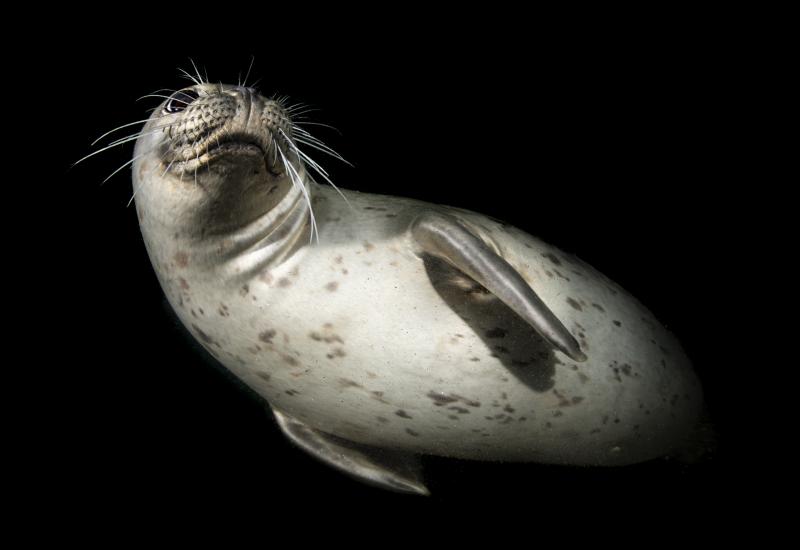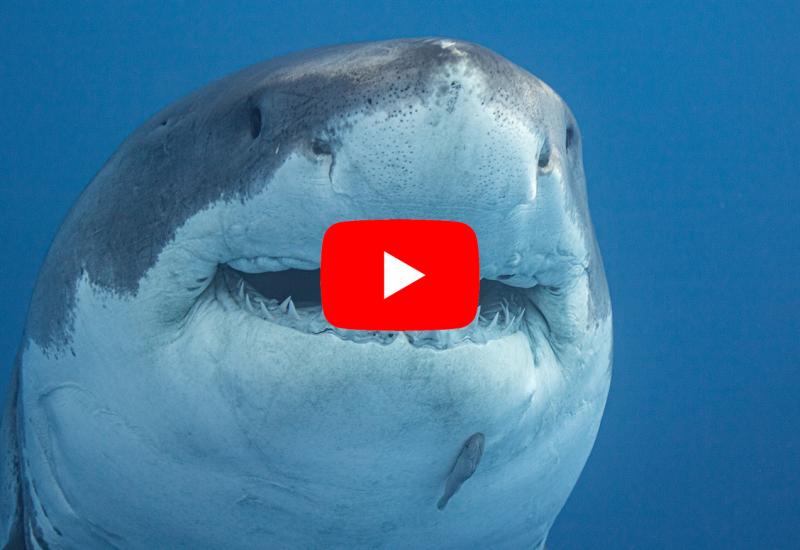Frontier Diving Along Northern California's Sonoma and Mendocino Counties
In a state with 3,427 miles of coastline, even the most ambitious diver would be hard pressed to see all of California’s underwater real estate in only one lifetime. It took me decades to venture beyond my usual haunts in the Golden State’s southern and central reaches to finally explore remote scuba outposts in northern California.
Sonoma and Mendocino counties are not dive destinations catering to the mainstream masses. Conditions can be challenging, weather turns on an instant, and surface swims out to the sweet spots are often long. But wild and wooly frontier diving has never deterred me, so when, after driving through the shadowy majesty of the famed redwoods forests we emerged at the town of Jenner on the doorstep of the vast Pacific, tumultuous waters below lashing at jagged rocks just offshore, I knew California’s north coast was for me.
Ocean access points are at a premium along this sparsely inhabited, breathtakingly beautiful, rugged coastline. Sheer cliffs, forested slopes, and relentless wind and waves mean divers cannot simply jump into the sea wherever they please. Most people therefore target coves and cuts and bays with rocky headlands that provide some protection from the prevailing northwest swell, facilitating safer shore entries and a more enjoyable underwater experience. Here are five of the region’s top dive sites.
Stillwater Cove

Brandon ColeWhite plumrose sea anemones
Fifteen miles up uber scenic Highway 1 from Jenner-by-the-Sea, Stillwater Cove is aptly named. Calm waters inside the cove proper make this a popular choice for scuba instruction and dive shop outings for folks coming from San Rafael, Santa Rosa and other cities north of San Francisco. Those with more experience (and enough energy, or better yet a dive kayak!) should go farther out to find better visibility and more marine life along the northern and southern sides. Following a tip from a fellow photographer, we kicked and kicked on the surface for 35 plus minutes (some 600 yards out from the cobble beach, according to Google Earth) to finally drop down near the wave battered washrocks just outside the cove’s northern point. Gigantic slabs of granite in 60 to 70 feet were covered in white plumose sea anemones while an impressive school of blue rockfish streamed past. The ghostly cauliflower-like Metridium anemones sprouting upwards into the teal-colored 49-degree water made for dramatic wide angle photos. During a less rigorous follow-up dive along a mini wall to the south I focused on macro subjects while sea nettle and moon jellyfish drifted through innerspace above me.
Gerstle Cove
Another of Sonoma county’s premier dives lies within the Gerstle Cove State Marine Reserve near Salt Point State Park. The shallow bottom near shore angles down to about 50 feet deep across the mouth of the cove. We settled in 40-ish amongst boulders shellacked in pink coralline algae and upright knife-edged rocks lined up like dominoes. The many nooks and crannies were packed with colorful critters. I spied nudibranchs (sea lemon, opalescent, and a multicolor dendronotid—a new one for my portfolio), sea cucumbers, chitons, and a wide spectrum of sea stars including giant, leather, mottled, bat, and ochre varieties. Fish-wise there were sculpins, painted greenlings, a little ling cod, and a few species of rockfish. Like anywhere along California’s north coast, visibility at Gerstle is highly variable. It’s possible to have 5 feet of pea soup green one day and 40 feet of Gatorade cyan the next. Though it may be tempting to scamper down the rocks near the point to avoid the 300-yard surface swim, the safer bet is to enter at the beach. A garden cart is handy to lug gear from the parking lot to the water’s edge. Gerstle Cove boasts restrooms, a freshwater shower, and a nearby campground.
Mendocino Headlands

Brandon ColeA sea star sits in a purple urchin barren.
Continue driving north on winding, cliff-hugging Highway 1 and eventually you will come to the often fog-shrouded seaside village of Mendocino. More people visit the artsy hamlet to hide away in romantic bed and breakfast inns, go on wine tasting tours, or watch crashing waves than to don SCUBA for adventure beneath the waves. Perfect. Unlimited elbow room underwater is one of the perks to diving the north coast. The first time I sussed out the scene at Mendocino Headlands State Park with intent to submerge, Poseidon was furious. The wind was howling and nine-foot swells exploded on the dark, craggy rocks. I sensibly stayed ashore and binge-watched movies on my tablet. But my attitude changed from “It would be suicidal to dive here” to “I really want to dive here” when, a couple days later, we returned to find the conditions much more inviting. We kitted up excitedly and channeling our inner mountain goat, very slowly, very carefully, climbed over a rock arch buttress and down a precipitous incline to the jade-blue sea, now only mildly frothy.
I’m glad we braved the descent. Though surgy in the shallows, things mellowed below 40 feet and our eyes feasted on the brightly colored marine life on display— gold and mauve speckled greenlings, neon green surf anemones, an orange sunstar, and purple, purple everywhere. Thick bull kelp once crowned the jumbled rocky substrate here, but that golden garden is now purple, gobbled up by an army of sea urchins. In recent years, an explosion in the purple urchin population has wiped out many of the north coast’s kelp forests. We also saw a few large red abalone roaming about the stark, spiney seascape. Because abalone also feed on kelp, ab numbers have declined dramatically with less kelp. The once robust recreational fishery which drew free divers from all over the state is currently closed. Our big tanks allowed us to reach a surviving kelp stand to the west of our starting point, where I paused to reflect on the delicate biological balance at the heart of this remarkable ecosystem.
Russian Gulch

Brandon ColeRussian Gulch Bridge
No perilous vertical mountaineering exploits are required to get wet at Russian Gulch two miles north of Mendocino. It’s as simple as suiting up in the parking lot and strolling across the beach under the iconic bridge. There is still a healthy surface swim to contend with, however, if one’s goal is to save air to maximize bottom time. Consider the exercise character building. I was nearly sweating in my drysuit by the time we rounded the northern point and dropped down. Eighty minutes later, I had begun to shiver, but a big smile graced my face after a productive photo session with rockfish as the rockstars. Parking ourselves in cul de sacs formed by rings of boulders in 40 to 55 feet, we had found a number of china rocks, gophers, and even a rarer vermillion. Our sunken studio’s gorgeous living backdrops of red strawberry anemones and pink coralline algae made for strong portraits of the various rockfish proudly perching with chin up and fins flared. Others paraded about as if they owned the place. They did, of course. We were just lucky visitors.
Van Damme

Brandon ColeMola-mola
Van Damme is the most popular dive in the Mendo area. The crescent shaped beach is well protected from the prevailing northwest swell thanks to the bay’s southwest orientation and a cluster of offshore rocks and extensive reefs. Stay shallow and hug the northern shoreline to take it easy, or go big on the outside; the choice is yours. Alerted to some incoming bad weather for the next few days, we opted for the latter plan in hopes of finishing our trip with a bang before the window of opportunity closed completely. We kicked on our backs for what seemed like an eternity—45 minutes in reality—to reach a small kelp bed atop an exposed pinnacle. We had no idea what to expect. Exploratory diving is notoriously a hit-or-miss affair. The tapestry of invertebrates decorating the reef was certainly nice. Sponges and tunicates, sea stars and sea urchins. And the supersized fish-eating anemones, as big as pizzas, were very cool. The healthy stand of bull kelp, home to feisty kelp crabs and a shimmering cloud of juvenile rockfish, better still. But it was the buck-toothed smile of the wolf eel that truly impressed. He— males are bigger and lighter in color than females, and have flabbier Muppet mugs—was super curious, snaking forth from his lair in 50 feet to eye us intently. Had he ever seen humans before? The north coast really isn’t known for big animal sightings, so I liked entertaining the idea that this surprise meeting may have been the first contact between our species. Even this encounter was bested when we bumped into a mola mola under the kelp canopy. It—I have no idea how to determine gender in this most alien of life forms—hung around with us for five minutes before awkwardly finning off into the unknown. One thing I do know is that I will be looking forward to the next exploratory dive somewhere off the beaten path along northern California’s remote, remarkable coast.
Need to Know
When to Go: Diving in northern California is very weather dependent, and because the weather and sea conditions are quick to change at any time, it’s impossible to reliably state a “best time to dive.” That said, summer and fall generally offer the most diveable days with manageable swell and wind. Lulls between wintertime storms can deliver great diving too. Spring tends to be the windiest period.

Brandon ColeA diver hovers behind a rock home to fish-eating sea anemones, red sea urchins, and a leather sea star.
Travelers Tips: Be sure to talk to experienced locals. Friendly folks at the dive shops in Marin and Sonoma counties can point you in the right direction to make the most of the current conditions. Some of the shops organize regular “fun dives” where folks meet up and splash together. Remember that this a remote section of coastline. At present there are no dive shops near the dive sites covered in this article. Bring everything you need to dive. Borrow or rent extra tanks so you can maximize your bottom time before returning to civilization for tank fills. The nearest dive shop is Seals Watersports in Santa Rosa, a 1.5 to 2-hour drive away. If you are staying overnight (highly recommended considering the required driving distances) on the coast, arrange your accommodation in advance. Besides hotels and bed and breakfasts, there are many beautiful campgrounds in the region. Most usually book full well in advance during summer, so plan accordingly. Don’t be tempted to take an abalone! They are protected by law and poaching fines will hurt.
Dive Conditions: Sea temperatures fluctuate with the seasons and upwelling events. In general, water temperature is coldest in spring, averaging high 40s, and warmest in the fall, averaging mid 50s at the surface. Thermoclines are possible. Depending on your thermal fortitude, wear a full 7mm wetsuit, a semidry, or a drysuit. Visibility varies from 5 feet to 50 feet depending on location and luck. Current is possible at some exposed sites such as near points and headlands and offshore pinnacles. Wind and swell are almost always present, and often it’s simply too rough to dive safely outside the most sheltered coves. Some dives are suitable for beginners, others challenge advanced divers. Personal fitness is important here. Be prepared for sometimes difficult shore entries. Mid to high tide is usually easiest for entry on beaches with rocks covered in slippery algae. Expect long surface swims, unless you bring your own boat. Dive kayaks are a great idea, or small inflatables that can be launched by hand. Larger boats can be launched on the Albion River to access Mendocino area sites.
Dive Support: The nearest dive shop is Seals Watersports in Santa Rosa, a PADI Dive Center 1.5 to 2-hour drive away. There are also shops a bit farther away in Rohnert Park, Novato, and Marin.
Related:










